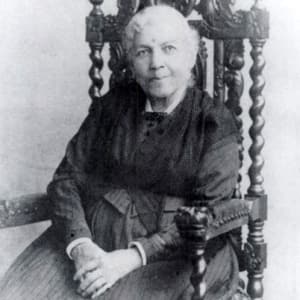
Leo Szilard
A student of such famed physicists as Albert Einstein and Max Planck, Leo Szilard was key in getting the United States to work on the atomic bomb.
Synopsis
The physics community had concern over the discovery of nuclear fission by scientists in Germany in 1939, and Leo Szilard and several other scientists convinced Albert Einstein to write to President Franklin D. Roosevelt about building the atomic bomb. Szilard became a part of the Manhattan Project, which sought to transform atomic energy for military purposes, and the group built the first nuclear reactor.
Early Life
Leo Szilard was born on February 11, 1898, in Budapest, Austria-Hungary (now Hungary). A student of such famed physicists as Albert Einstein and Max Planck, Szilard was instrumental in getting the United States working on the atomic bomb. The son of a civil engineer, he followed his father's footsteps in 1916. Szilard became an engineering student at a technical university in Budapest. But he was only there a year before he joined the Austro-Hungarian Army.
In 1917, World War I was still raging. Szilard was saved from going to the front lines by illness. After the war, he briefly returned to school in Budapest before transferring to the Technische Hochschule in Charlottenburg, Germany, in 1920. Szilard switched schools and majors soon after. At the University of Berlin, he studied physics with the likes of Albert Einstein, Max Plank and Max von Laue.
Collaboration with Einstein
With von Laue as his adviser, Szilard worked on his thesis, which explored thermodynamics, or the study of the physics of heat. He earned his Ph.D. in physics from the University of Berlin in 1922. Not long after finishing his studies, Szilard worked as a research assistant to von Laue at the Institute for Theoretical Physics for several years. He also collaborated with Einstein on a type of home refrigerator. One of the most notable results of their collaboration was the Einstein-Szilard pump.
In 1927, Szilard became an instructor, or privatdozent, at the University of Berlin. He published a paper, "On the Decrease of Entropy in a Thermodynamic System by the Intervention of Intelligent Beings," two years later. The paper was based on his work on the second law of thermodynamics.
Leaving Germany in 1933, Szilard moved due to the rise of the Nazi Party. The party's anti-Semitic policies made it difficult for Jewish academics and professionals like Szilard to stay there. He went to Vienna for a time and then arrived in London in 1934. There, Szilard worked at St. Bartholomew's Hospital, where he conducted experiments on chain reactions. While Szilard did not find the chain reaction he was searching for, he did find a way to separate isotopes, or special parts, of certain elements.
Atomic Energy Research
Szilard continued his work on nuclear physics at the Clarendon Laboratory at Oxford. He tried to convince other physicists, including Enrico Fermi, about the possibility of harnessing atomic energy as well as to warn them about its potential dangers. In the late 1930s, he moved to the United States to teach at Columbia University.
The physics community was in awe and concern over the discovery of nuclear fission by Otto Hahn and Fritz Straussmann in Germany in 1939. Szilard and several other scientists convinced Albert Einstein to write to President Franklin D. Roosevelt about building the atomic bomb. With the Nazis trying to take over Europe, they were concerned about what would happen if the Germans developed the bomb first.
The Manhattan Project
To this end, Szilard became a part of the famed Manhattan Project, which sought to transform atomic energy for military purposes. He conducted research at the University of Chicago from 1942 to 1945. There, Szilard worked with Enrico Fermi to build the first nuclear reactor.
Forever changed by seeing the destructive force of the atomic bomb, Szilard joined the Emergency Committee of Atomic Scientists. This international organization wanted to prevent further military use of atomic energy. For the rest of his life, Szilard worked on nuclear safety and arms control. He started the Council for a Livable World in 1962, which is still dedicated to reducing the threat posed by nuclear weapons.
Leo Szilard died on May 30, 1964, in La Jolla, California.




